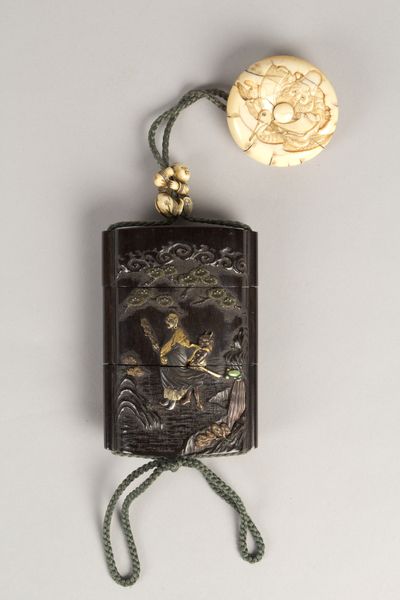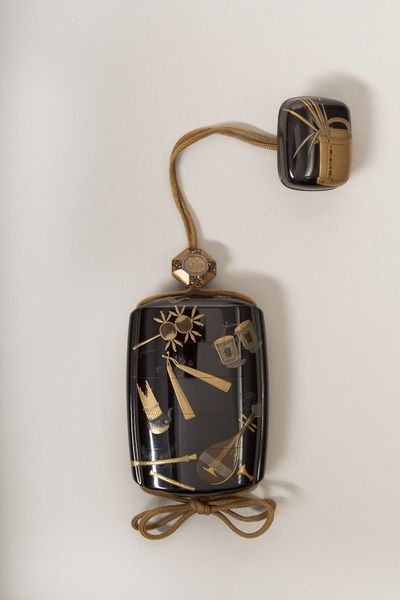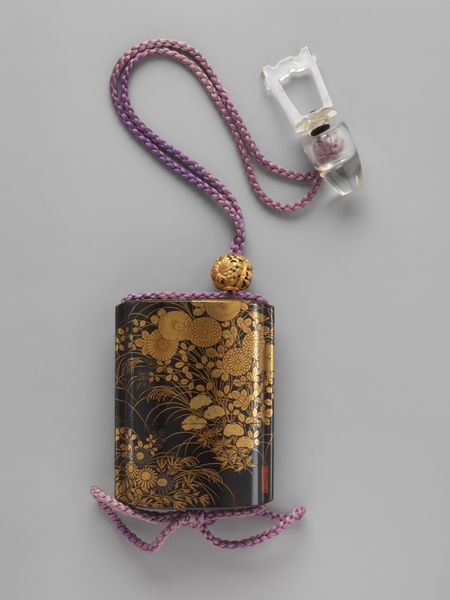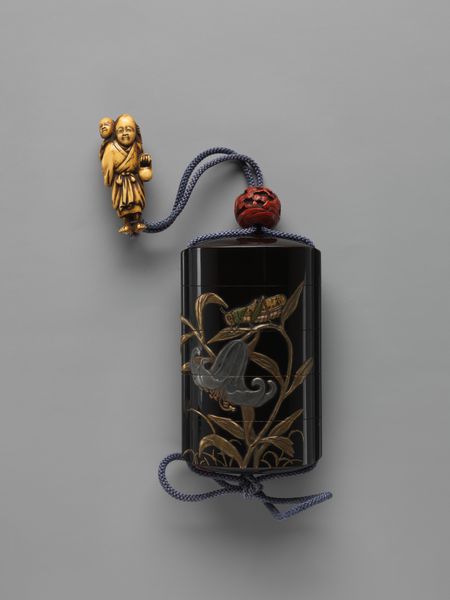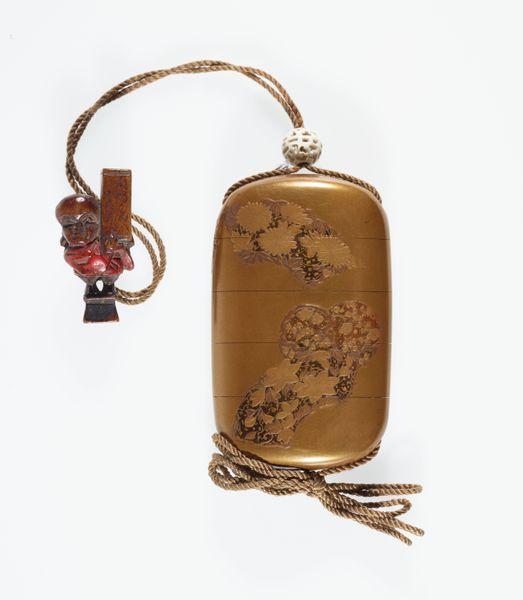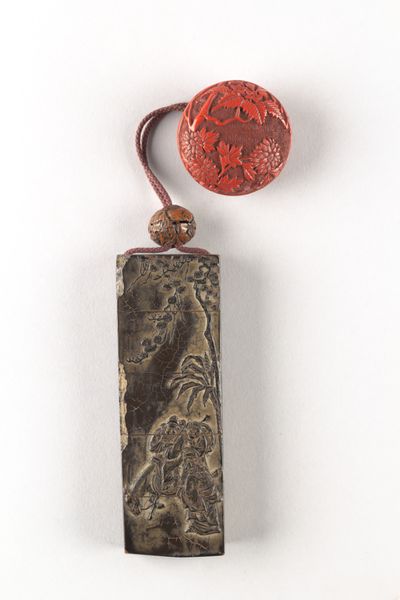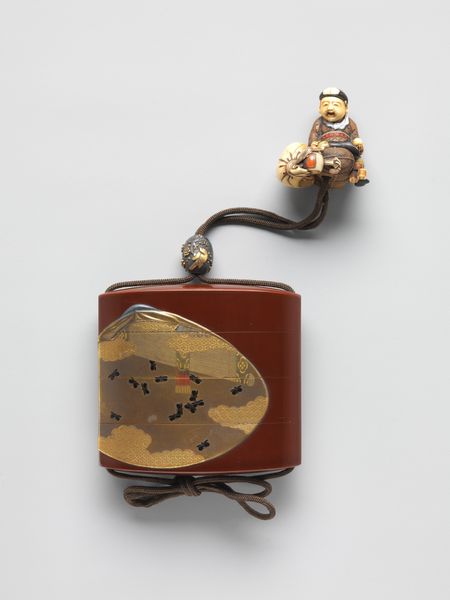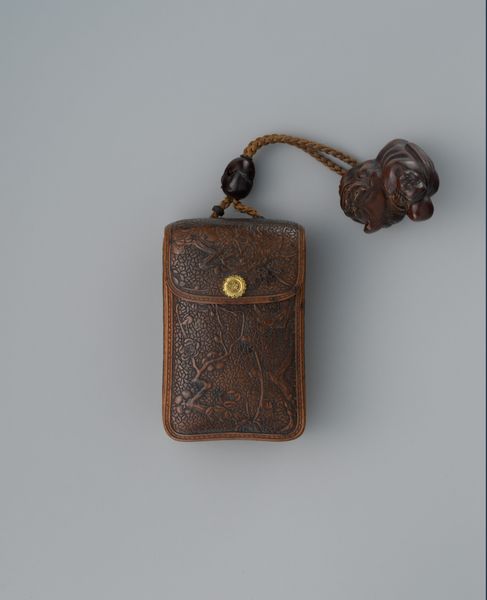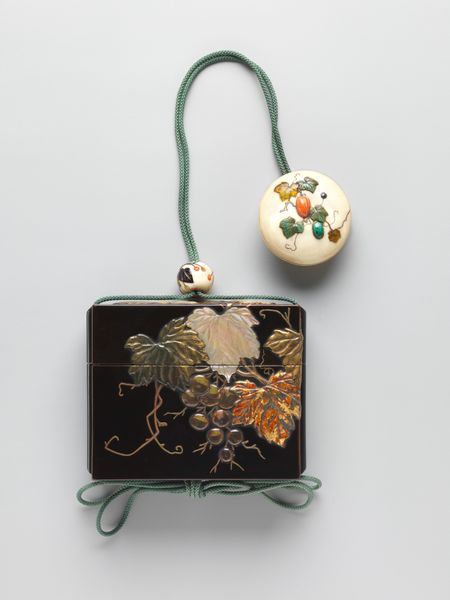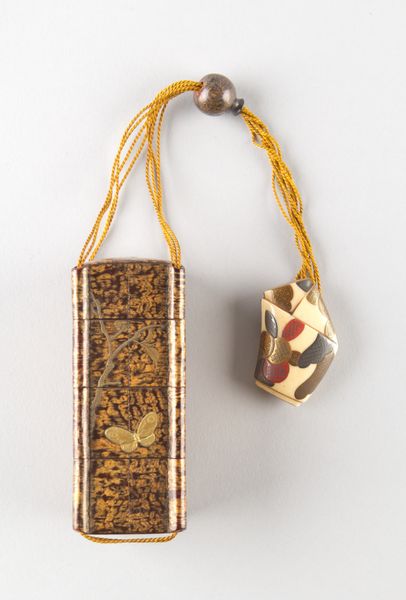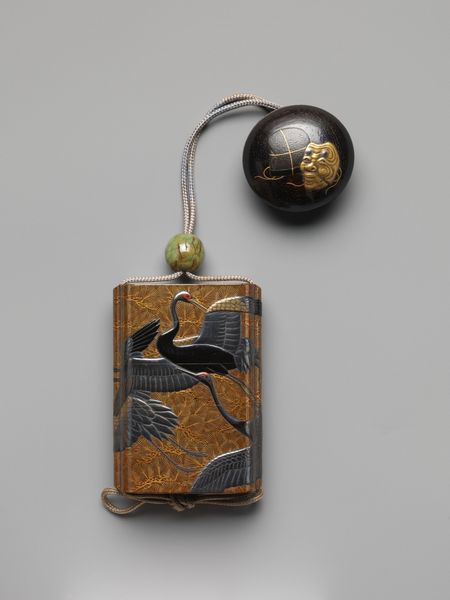
Case (Inrō) with Design of Lotus (obverse); Lotus and Bird (reverse) 19th century
0:00
0:00
Dimensions: H. 3 1/16 in. (9.4 cm); W. 1 7/8 in. (4.8 cm); D. 1 3/16 in. (3 cm)
Copyright: Public Domain
Editor: This is a beautiful Inrô, or small case, dating from the 19th century. It's made of wood and features a design of lotuses and a bird, credited to Shibata Zeshin. I’m struck by the intricate details and the contrast between the dark background and the delicate floral designs. What are your initial thoughts on its formal qualities? Curator: Considering the object's formal qualities, the pronounced verticality commands attention. This linear emphasis is counterbalanced by the curvilinear patterns of the lotus leaves and swirling decorative elements found on the ojime and netsuke. The eye is led from top to bottom in a dynamic yet controlled manner. Editor: The lotus design seems to dominate the composition, almost eclipsing the bird on the reverse side. Does the lotus motif carry any particular significance within the context of Asian art or culture, informing our perception of the artwork’s structure? Curator: Indeed. The lotus flower often embodies purity and spiritual awakening, as well as creative insight. How do you think the artist employs the concept of “miniature” to convey symbolism? Consider also the way light and texture converge. Editor: The size enhances its intimate nature, drawing viewers closer. And the luminosity seems concentrated within the petals, offering a soft glow against the darker wooden surfaces. The contrast is subtle but noticeable. It highlights the delicacy and sacredness associated with the flower. Curator: Precisely. Now, let us reflect upon our improved ability to deconstruct formal characteristics and interpret how design is interwoven with themes to shape art’s effect. Editor: Thank you for illuminating the ways we may understand not just what the artwork depicts, but how design affects our understanding of symbolism, through form and through function.
Comments
No comments
Be the first to comment and join the conversation on the ultimate creative platform.
